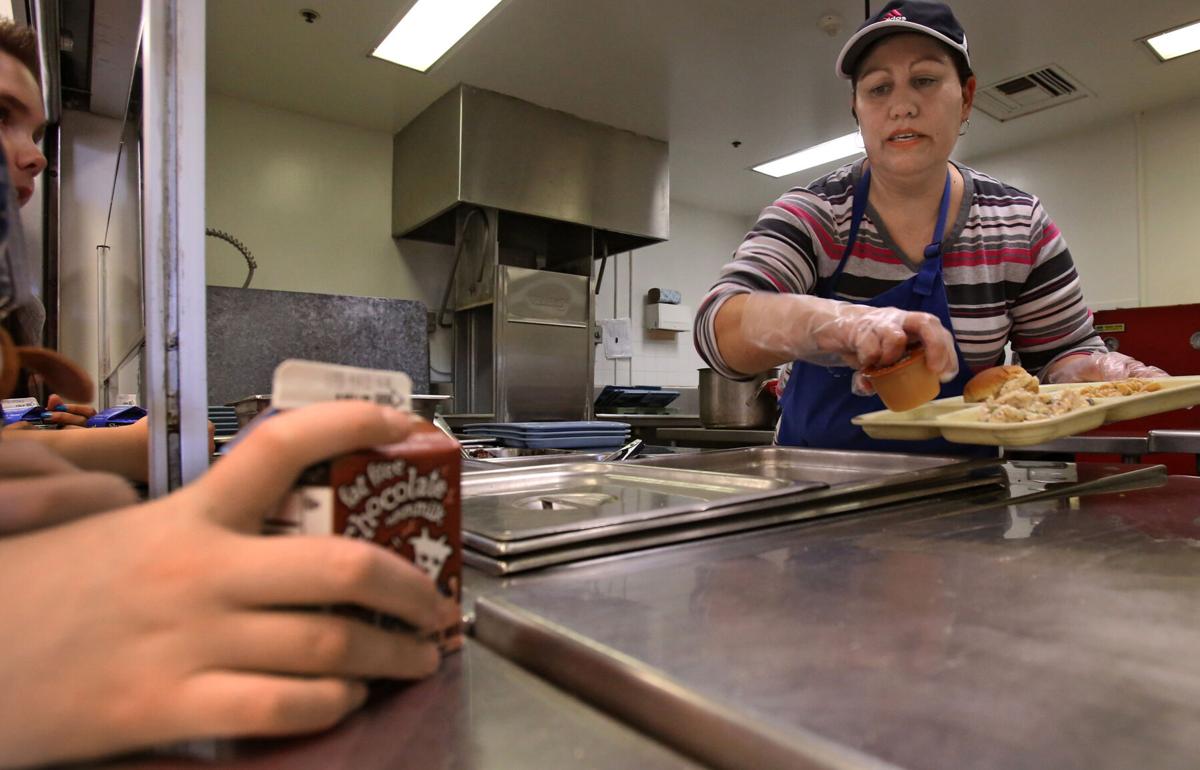Parents with students enrolled at some Tucson Unified schools can expect to pay more for their kids’ meals, after the governing board approved a price hike of 25 cents for breakfast and 20 cents for lunch.
This move comes a couple weeks shy of the June 30 expiration date of a federal COVID relief program that has waived meal costs since March 2020, said Lindsay Aguilar, the district’s food services director.
The measure, approved Tuesday by a 3-2 vote, will potentially affect more than 9,700 students in 27 schools across Tucson Unified School District.
“Of course, I certainly would like to not have to do so,” Aguilar said in reference to increasing the prices. “But we are being faced with a pretty tremendous increase in our food costs, as well as an increase in our labor costs. … Your price charge does need to cover your costs.”
Aguilar noted that the price increases will not affect the other 60 schools in the district, as those still qualify for free meals through the Community Eligibility Provision (CEP), a non-pricing meal service through the U.S. Department of Agriculture.
For the 27 non-CEP schools, the price increase means that students enrolled in grades kindergarten through fifth will see their breakfast prices go from $1.25 to $1.50 and their lunch from $2.30 to $2.50.
At the middle and high school levels, students will see their breakfast increase from $1.50 to $1.75, while their lunch costs will go from $2.80 to $3.
That translates to an annual increase of $44 for breakfast and $35.20 for lunch across all grade levels, assuming the individual eats both meals every school day of the year.
Aguilar said the district plans to strongly encourage and help families to apply individually for free or reduced lunch benefits based on their household incomes. She added that families already receiving SNAP benefits or McKinney Vento Act aid for homeless youths will automatically qualify for free or reduced lunch.
Alternatives
As for those students who do not have enough funds in their accounts, Aguilar said, the schools will offer alternative meals that are also charged.
Students in K-8 who have two meal charges pending on their accounts will be offered a bagel, fruit and milk for breakfast, and a grilled cheese sandwich, fruit, vegetable and milk for lunch.
High school students who do not have any funds available in their account will be offered a cheese stick and fruit at a 50-cent charge.
That policy did not sit well with board member Sadie Shaw, who voted against the measure along with Natalie Luna Rose.
“It was kind of disappointing to see what happens when there’s a student who doesn’t have enough money to pay for lunch,” Shaw said. “Why don’t they get an actual meal? Because you’d think the high school students, who are like adult-sized, would need more nutrition.”
She added that she wasn’t comfortable with increasing any meal prices, given poverty and neglect issues that may be present in students’ homes.
But Aguilar said it would cost the district about $769,000 to cover the cost increases in food services and keep the current meal prices for students. Some board members thought that was too high of a cost for the district to take on.
“We’ve made so many decisions based on just a million dollars here and there. That’s a huge amount and, especially, if this is going to be affecting our middle and upper class individuals,” board member Ravi Shah said.
Board member Adelita Grijalva added: “None of us want to increase costs for our students, but we also have to find out where the funding is going to come from.”





